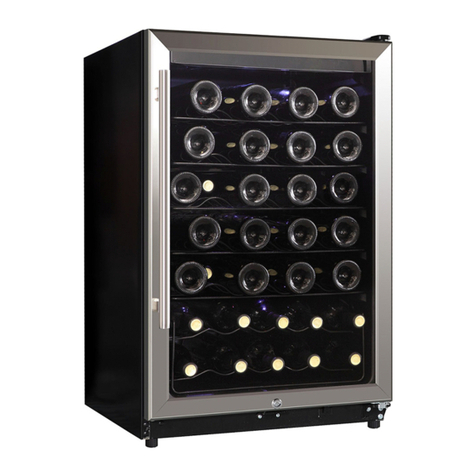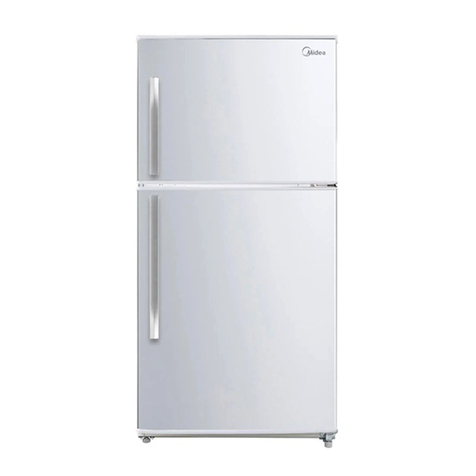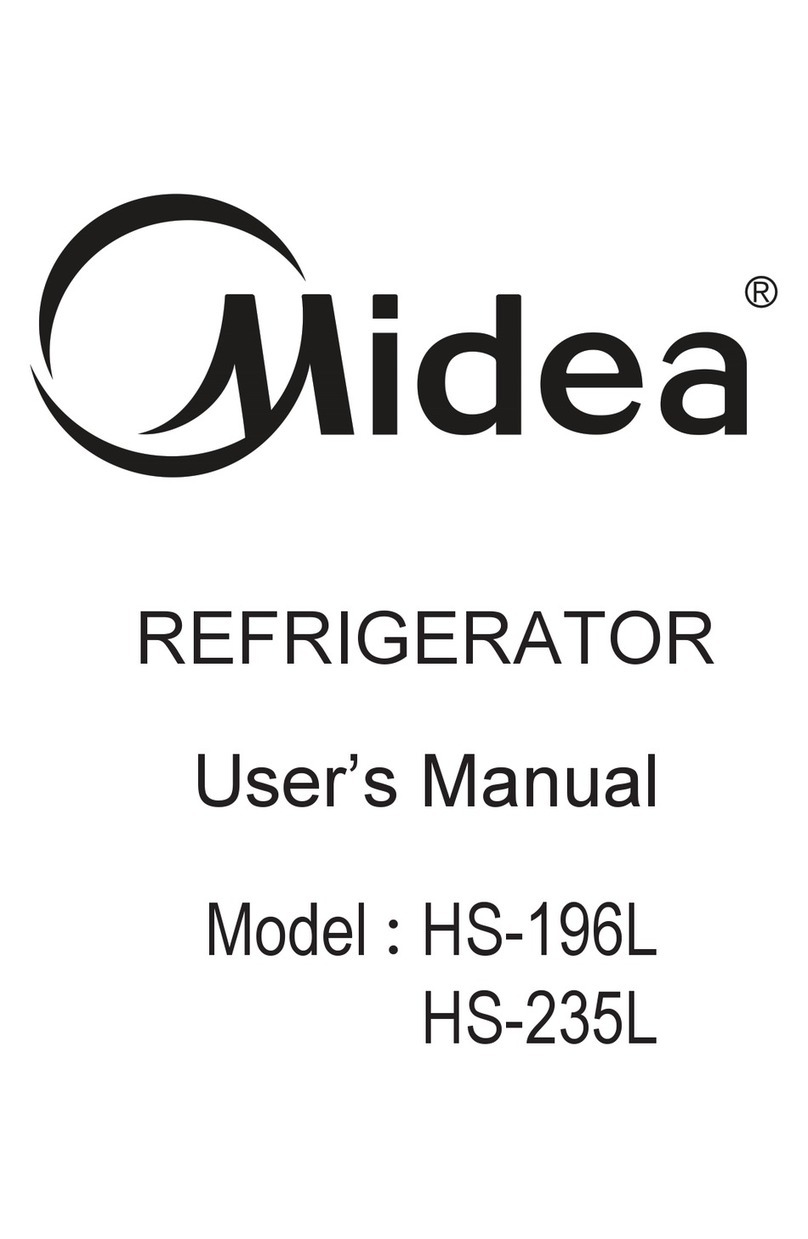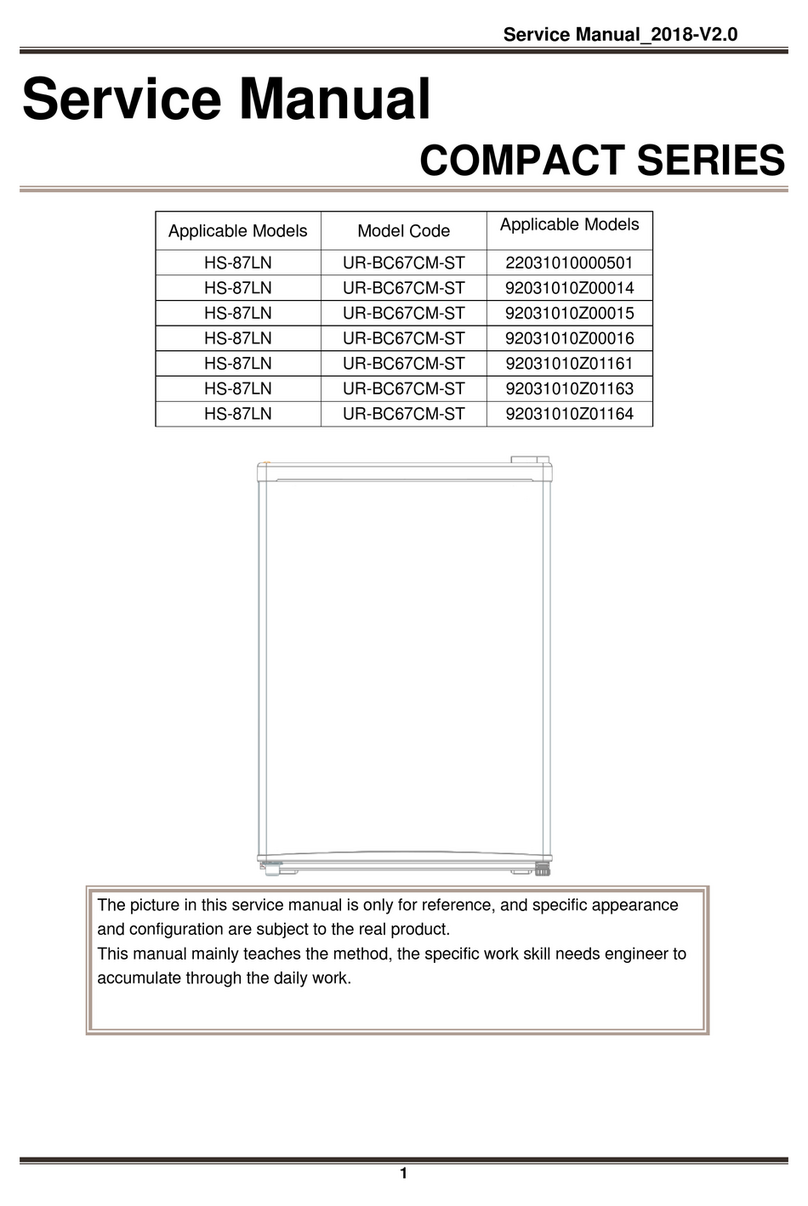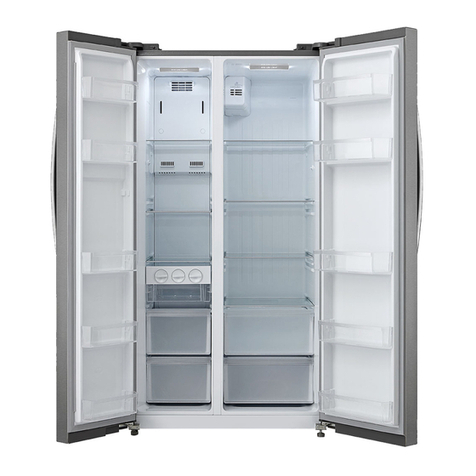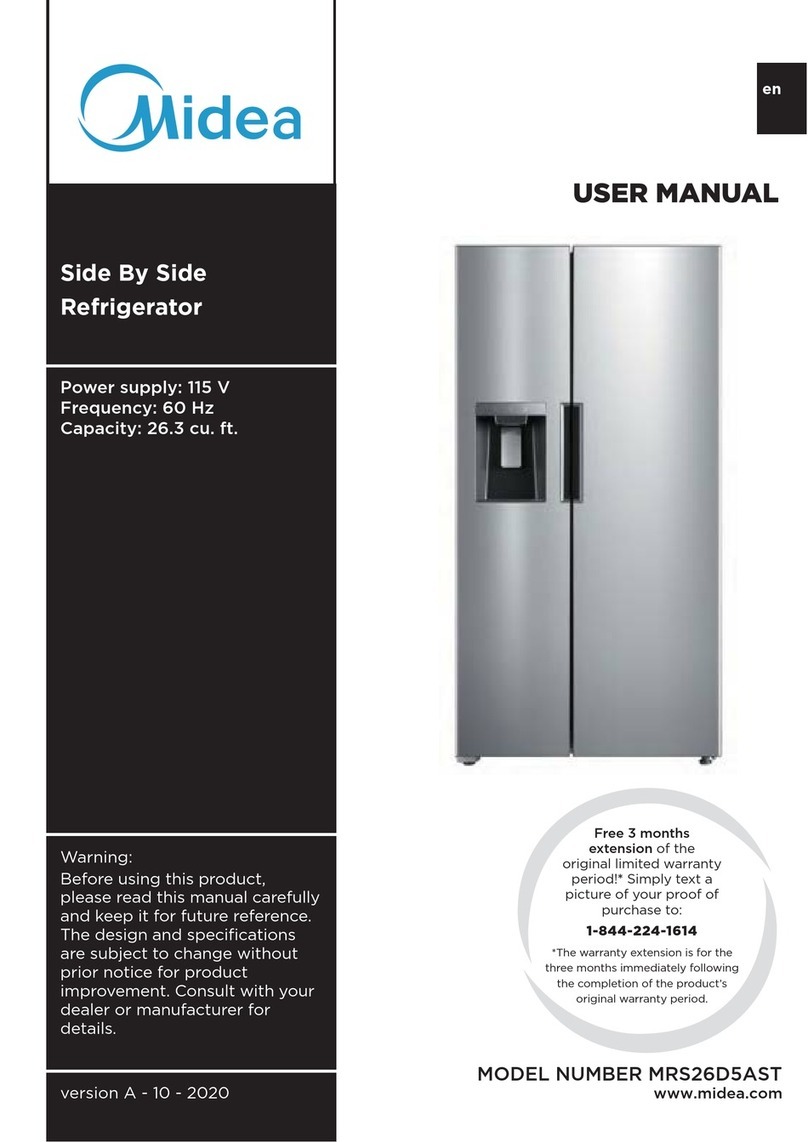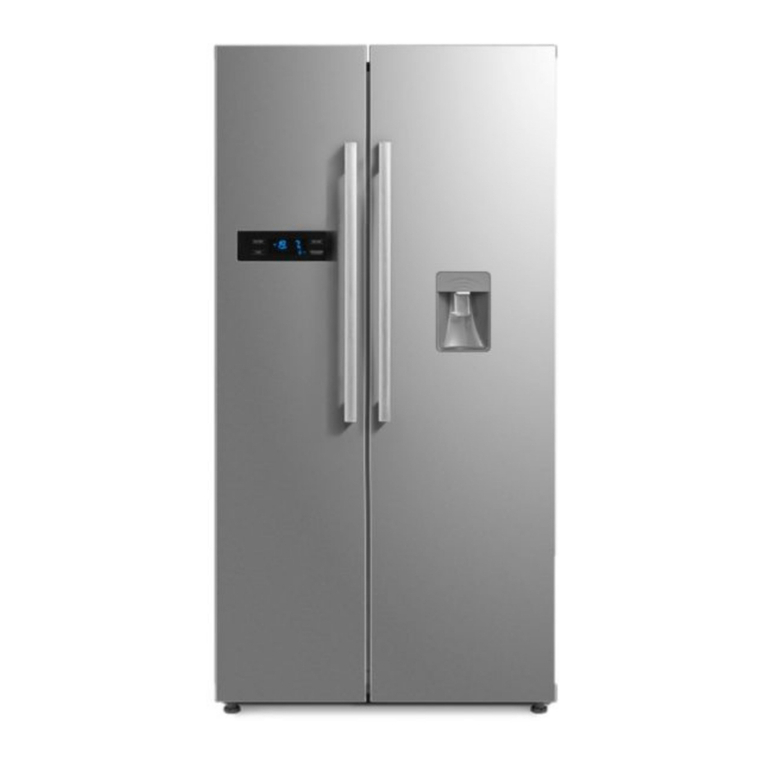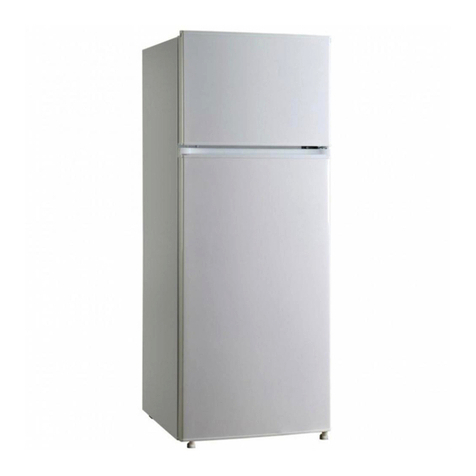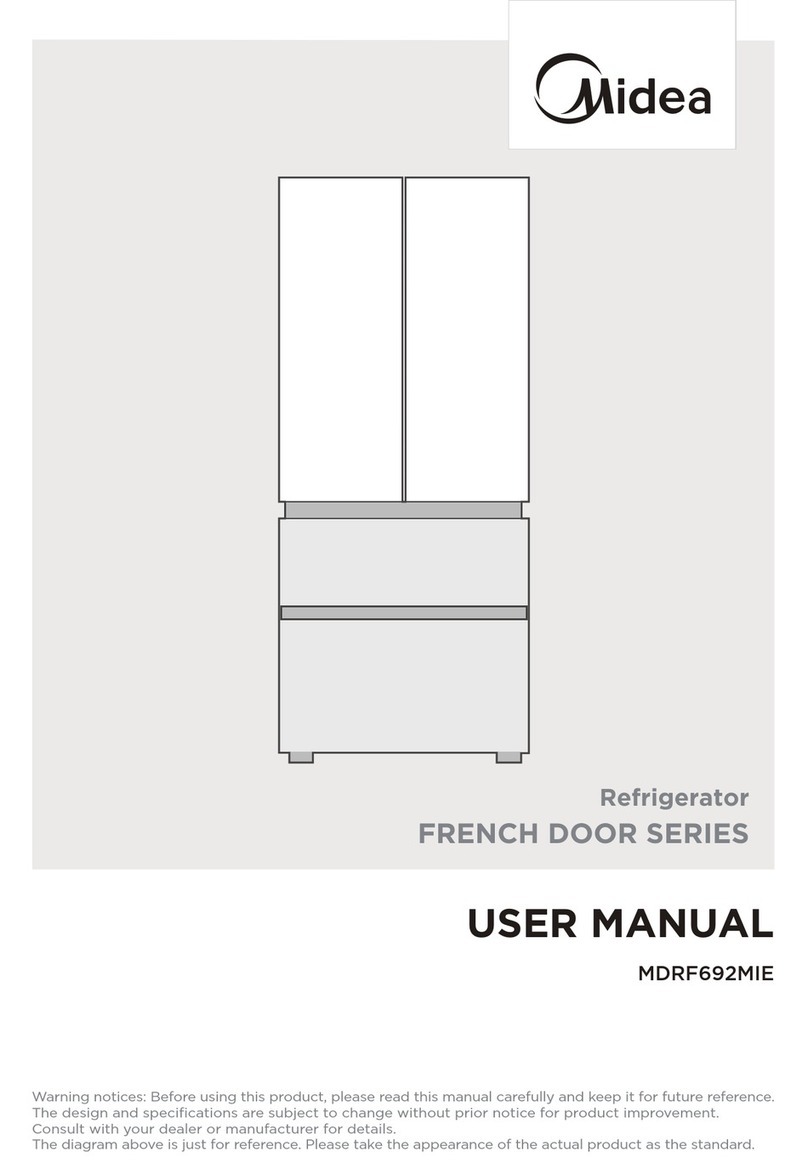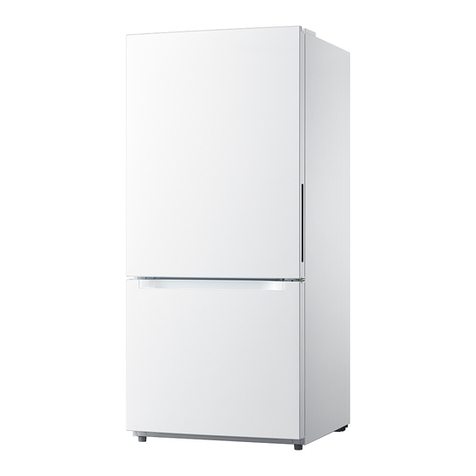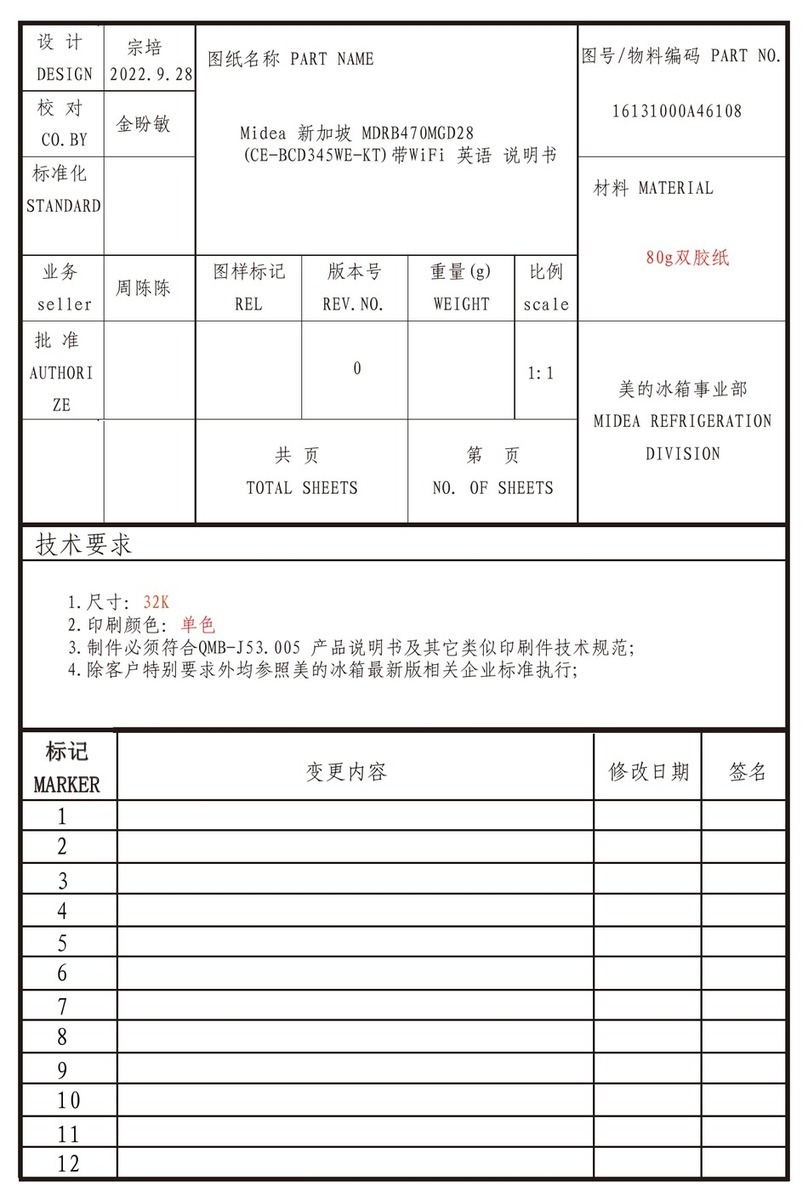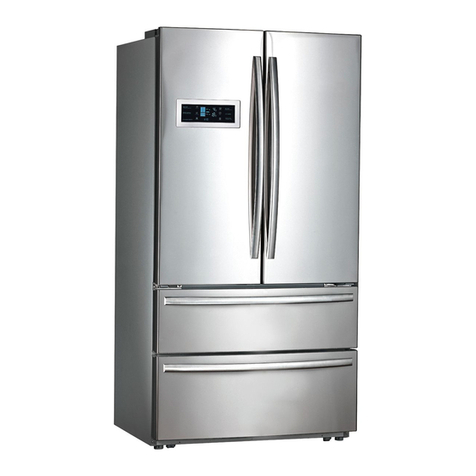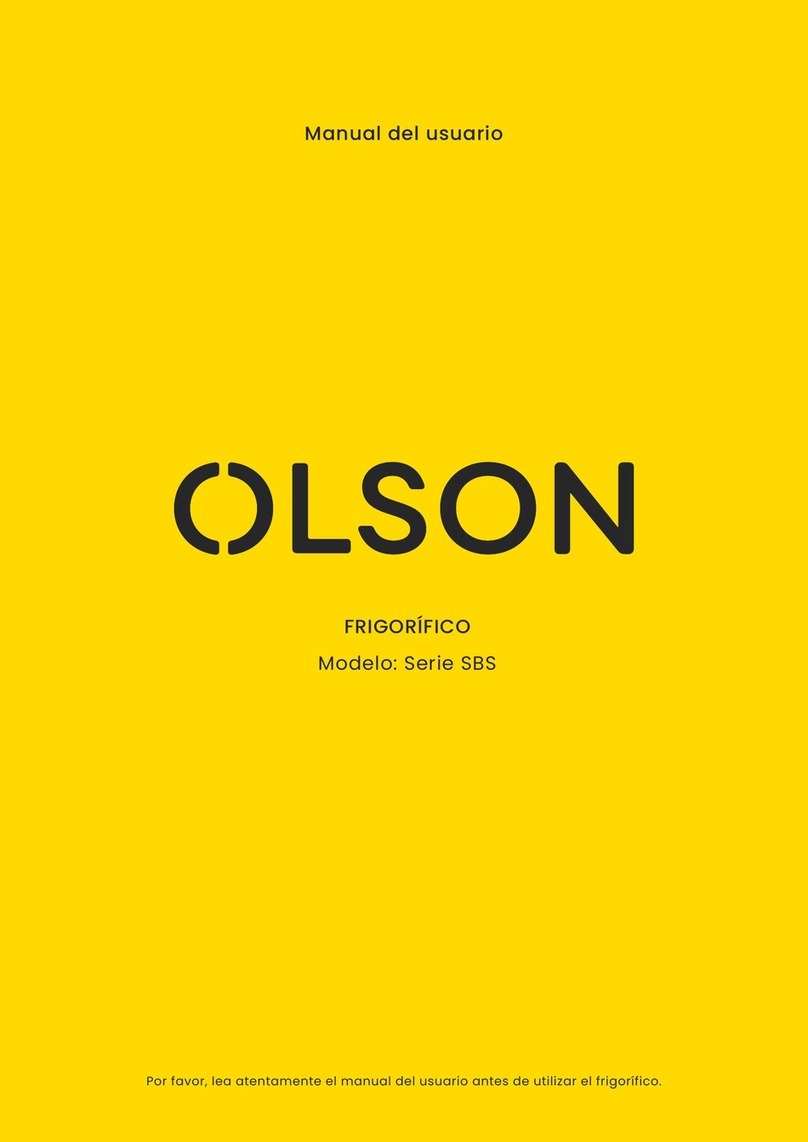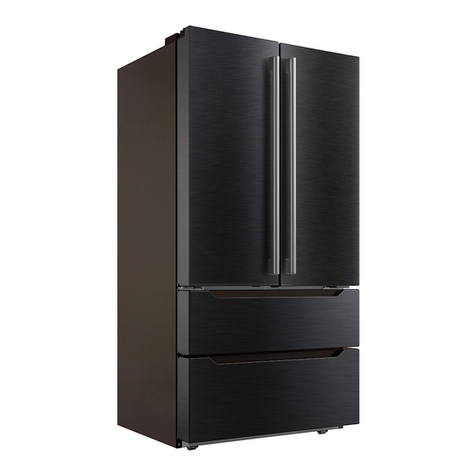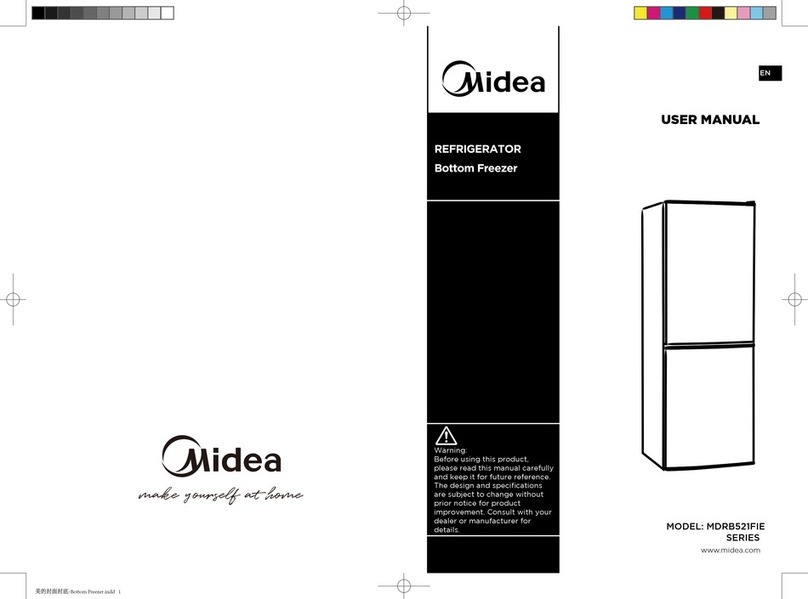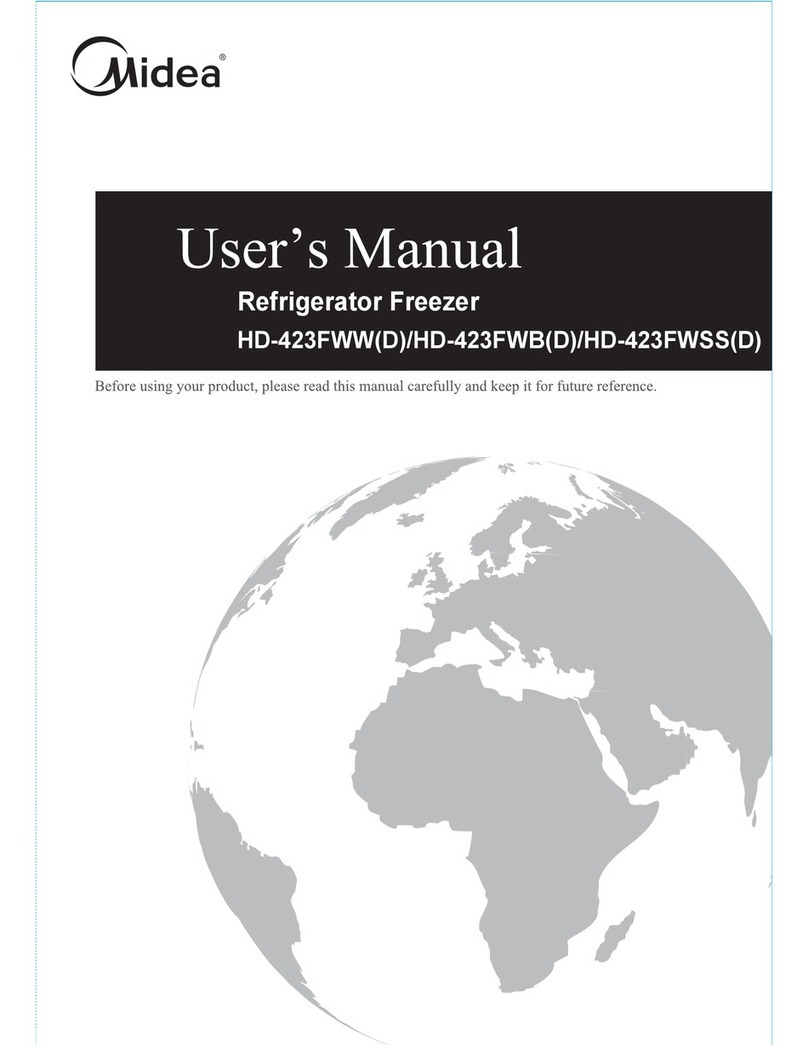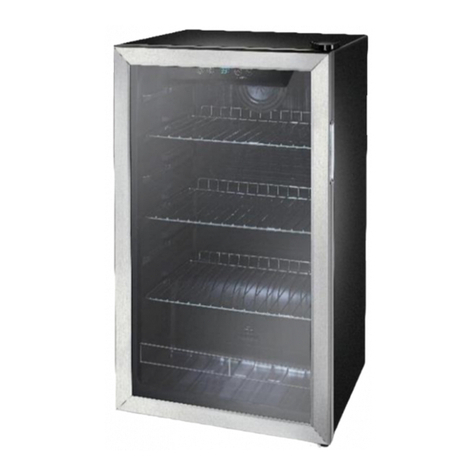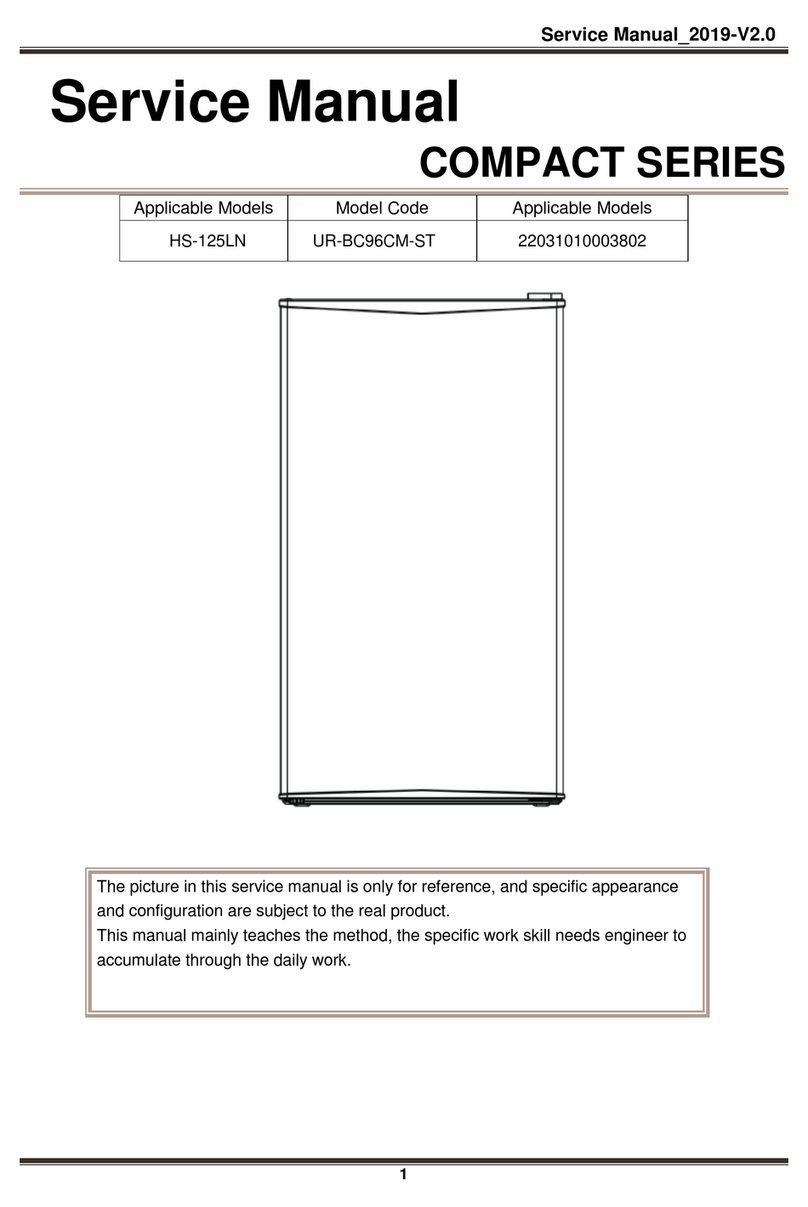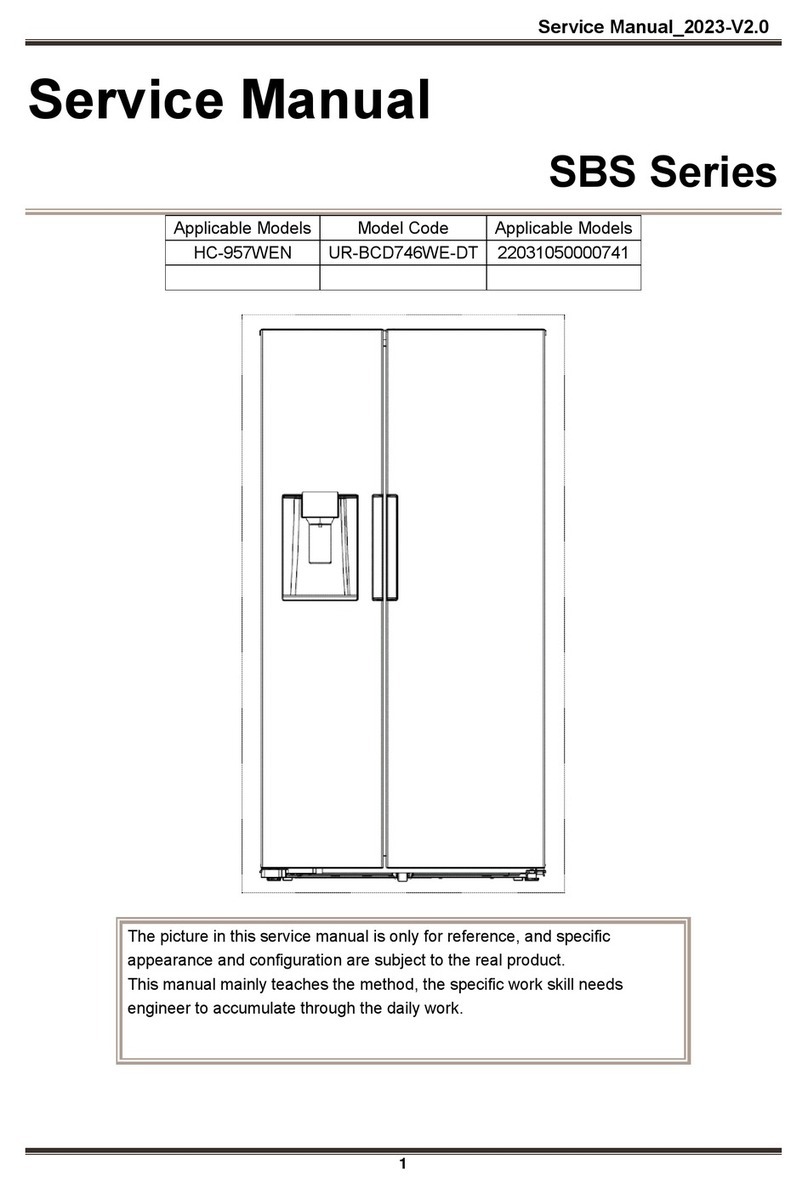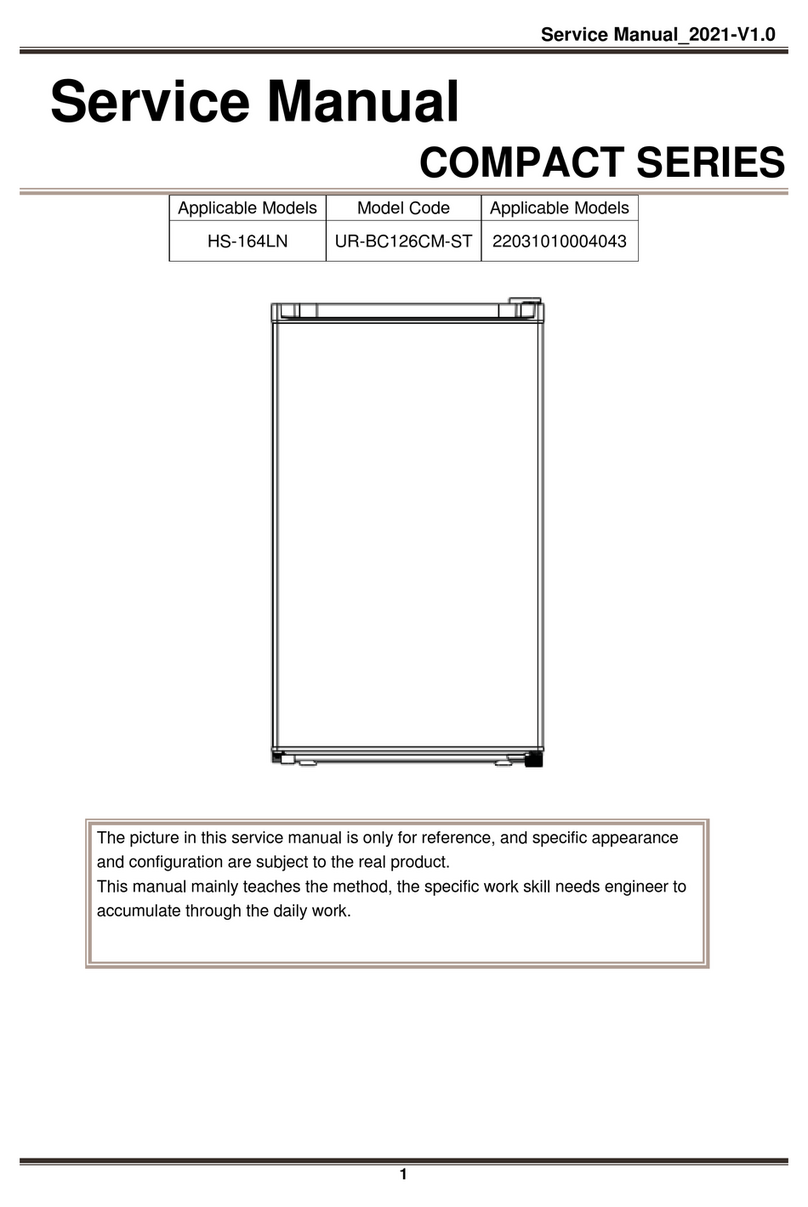
2.2 Temperature Control
7
Standby function
In standby state,press the standby button until the buzzer rings, the Wine Cooler will exit standby
state,and the display screen will display the set temperature;
If not in standby state, long press standby button for 5 seconds until the buzzer rings, the Wine
Cooler will enter in standby state, the display screen will turn off.
Memory function
Display Control
when power-on the Wine Cooler, the display screen will display in full last for 3 seconds,
and the start-up tone will ring, and then enter into the display of normal operation;
Normal operation display: ① In case of no failure, set temperature is displayed; ② In case of
failure, error code is displayed;
This cooler adopts the touch control of the glass door. Touch slightly when pressing the keys. It is to
be avoided that the area of the display panel is scratched by the sharp things and it shall be kept
away from the environment of high magnetic field and high humidity. Otherwise the cooler is possible
not to be set and operate normally.
Lighting mode
Press the lighting key until the buzzer rings to turn on/off the internal lamp.
Switching of the Fahrenheit temperature and Celsius temperature
Press the Temperature-rise key and the Temperature-drop key to
finish the switch of the Celsius temperature and Fahrenheit temperature; the display area will
show the setting Fahrenheit temperature or Celsius temperature under the existing mode.
continuously for 3 seconds
Temperature setting
Press the Temperature-rise key ,the temperature will increase 1℃ (or ). After locking, the
cooler will operate according to the setting value;
Press the "Temperature-drop key “, the temperature will decrease 1℃ (or ℉). After locking, the
cooler will operate according to the setting value.
" " ℉
Setting range of the Celsius temperature:-5℃~18℃; setting
range of the Fahrenheit temperature: 23 ℉~65℉.
The cooler has the power off memory function. After the power is on again, the cooler will work
according to the setting before the power-off.
Error code:
Storing too many cans or bottles in the cooler may cause the temperature in the cooler to rise
temporarily.
If the failure happens, the display area will show corresponding error codes as shown
as below table, the user shall contact a specialist for maintenance, so as to make sure the
normal use of Wine Cooler.
Error code
E1
E4Fault of defrost temperature sensor
Description
Fault of temperature sensor
(The picture above is only for reference. The actual configuration will depend on the physical
product or statement by the distributor)
Standby button
Lighting key Temperature-rise key
Temperature-drop key
E7Temperature sensor fault in refrigerating chamber
